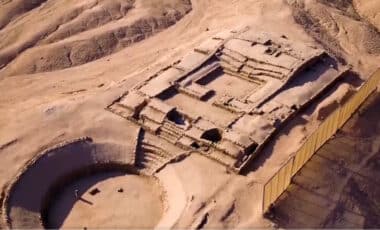After the Armistice in November, 1918, that brought fighting to end the “Great War”, the“war to end all wars”, Germany, under harsh restrictions, was forbidden all military aircraft. Adozen years later, Hitler’s ascendancy to absolute power released the first storm clouds of theSecond “Great War”, World War II, by designing and mass-manufacturing the MesserschmittMe109. By 1939 and Hitler’s invasion of Russia, the new pacesetting monoplane with twomachine guns and two cannon, a slender 550 km/h (342mph) single seater, flooded the skies ofGermany, Austria, and the Sudetenland, by the hundreds. With its raiding partner, the Me110,designed as a long-range, night fighter, the fledgling Luftwaffe was suddenly invincible.Germany was in preparation to obliterate Britain, the only European nation feared. WhereGermany had the Me109 and Me110, Churchill had the sturdier but slower Hawker Hurricaneand faster, more maneuverable Supermarine Spitfire. If the Fuhrer planned to invade Britainbefore swiveling into the Soviet Union, he had to control the skies over the English Channel.Poised for war, the Luftwaffe had 702 Me109s and 227 Me1105s. Air Marshall Goring setTuesday, 13 August 1940 as Adlertag, “Eagle Day”, as the start of the Adlerangriff, “EagleAttack”, that would sweep the Royal Air Force out of the British clouds and bring the Isles totheir knees.Reviewed and highly recommended by Don DeNevi“AIRCRAFT of the LUFTWAFFE FIGHTER ACES Volume I – – A Chronicle in Photographs”, by BerndBarbas. A Schiffer Military History Book: 1995, 264 pages, hc; $49.95. Visit:www.schifferbooks.com. Contains over 600 black and white and color photographs, colorprofiles, and line schemes“AIRCRAFT of the LUFTWAFFE FIGHTER ACES Volume II – – A Chronicle in Photographs”, byBernd Barbas. A Schiffer Military History Book: 1995, 208 pages, hc; $49.95. Visit:www.schifferbooks.com. Contains over 600 black and white and color photographs, colorprofiles, and line schemes.Each of these handsomely designed and produced coffee table-sized volumes is 8 ½” x 11 ½”,employing the finest paper and strongest possible binding money can buy. The artwork, frontand back, of the two complementing dust jackets by renowned illustrator Steve Ferguson ofColorado Springs is always exceptional. For master works such as these, the covers are alluringand accurate. Author Barbas is profuse in his Acknowledgement page appreciation to thealmost 100 ex-Luftwaffe personnel and their relatives who made available their privatephotograph collections, additional airfield locations and combat information of the JG units that
served there, especially concerning the fates of several pilots who served there, pilot photos
while resting, and stories about them since their portraits hung in the camp mess halls. FormerKommodores of the 19 JG units presented in Volume 1, and the two dozen in Volume 2 areespecially applauded for tracking down snapshots of serious, deadly airfield activities, but moreof youthful men at play and carousing.Assembling the photos, their rich captions of identifications, and triple-checking accuraciesrequired author-compiler Bernd Babas more than a decade of resolute, meticulous work. Theresult of all his effort, and the resolve of countless others, is that we Americans are privy ofbehind the battle scenes airfield activities. Opening Volume 1 and perusing the first fewphotographs, especially of the three-man field crew loading the machine guns of the Bf 109G-2/R6, two laughing and giggling as they look into the camera while lift the heavy belts fromtheir delivery encasement, while the third man is mesmerized by a black pet cat is on theairship’s cowling retreating to the cockpit from the steel, still propellers. What is so hilarious isthe cat is in the same position as the JG motif painted on the side of the engine.The two large photo albums are crammed with photos far more serious than jollying teenageboys finding amusement while handling munitions for weapons of mass destruction. They arealso first-hand accounts of and accompanied with photos of the devastating effects of Alliedbombing of their airfields, young men with horrendous burns in the medical wings of airfieldhangers and housing, at mess after missions, scenes of seas of mud, aircraft stuck in layers ofsnow in unbelievably freezing weather on the Eastern Front. Pilots such as famous AdolfGalland and Erich Hartman, the world most successful fighter pilot with 352 victories, and hisbeloved Bf109-G6, “Yellow 1”, are highlighted. Of course, rare photos of the JG7, the world’s
first fighter jet, and advanced Me26 jet, are presented with their pilots.
Wrote Oblt Erich Hartmann in the Foreword, “Looking back through photographs taken in thosedifficult times made me realize how young and innocent we were; yet despite this, many of ussomehow managed to come through it all. But they also bring home that so many of mycontemporary airmen on both sides were not nearly so fortunate. When I look back and reflectupon the war years, I can only hope that today’s youth will be spared the day-by-dayexperiences we lived through in those times. I commend the author’s work as a valuableenrichment to the record of aerial warfare. It is also my wish that it may contribute somethingto mutual goodwill and international understanding amongst all who fly themselves or are
interested in aviation.”








